Coordinate Systems for the Plane
An Introduction
|
|
Prof. David Bernstein
James Madison University
|
|
| Computer Science Department |
| bernstdh@jmu.edu |

|
Getting Started
- Coordinates:
- Quantities that designate the position of a
point in relation to a given reference frame.
- The Quantities:
- Can be linear and/or angular
Rectangular/Cartesian Coordinates
- Reference Frames:
- An origin
- A basis (i.e., an appropriate number of linearly independent
vectors)
- Directional conventions
- The Traditional Reference Frame for the Plane:
- The origin is at the center
- The basis consists of the horizontal and vertical axes
- Positive values in the "north east" quadrant
Visualizing Rectangular/Cartesian Coordinates
The Plane
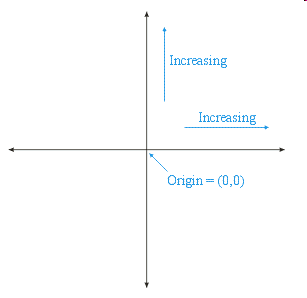
Visualizing Rectangular/Cartesian Coordinates (cont.)
A Discretization
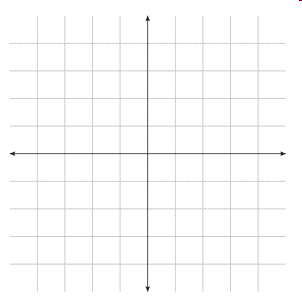
Visualizing Rectangular/Cartesian Coordinates (cont.)
Nerd Humor
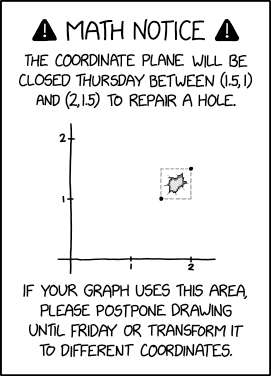
(Courtesy of xkcd)
Polar Coordinates for the Plane
- The Reference Frame:
- An origin at the center
- An angular
rotation around the origin and a
linear distance from the origin
- Counterclockwise is positive; North is positive
- The Angular Quantity:
- Can be measured in degrees or radians
Visualizing Polar Coordinates
The Plane
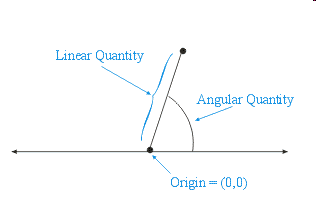
Visualizing Polar Coordinates (cont.)
A Discretization
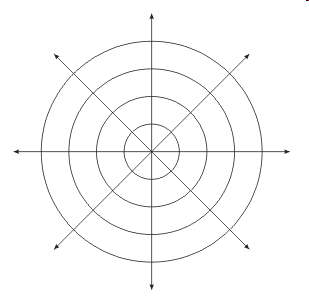
Converting between Polar and Cartesian Coordinates
Notation
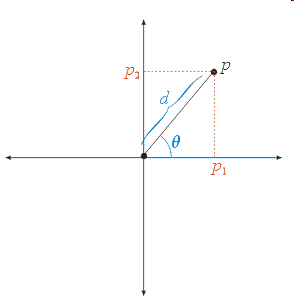
Converting from Polar to Cartesian
- What We Know:
- Using the Right Triangle:
- \(\cos \theta = p_{1} / d\) so \(p_{1} = d \cos \theta\)
- \(\sin \theta = p_{2} / d\) so \(p_{2} = d \sin \theta\)
Converting from Cartesian to Polar
- What We Know:
- Using the Right Triangle:
- \(\tan \theta = p_{2} / p_{1}\) for \(p_{1} \gt 0\)
so \(\theta = \tan^{-1} p_{2} / p_{1}\)
- Using the Norm:





